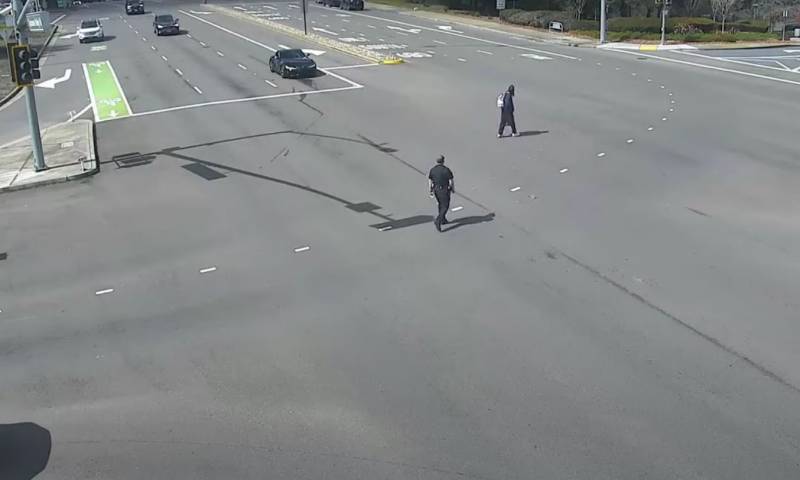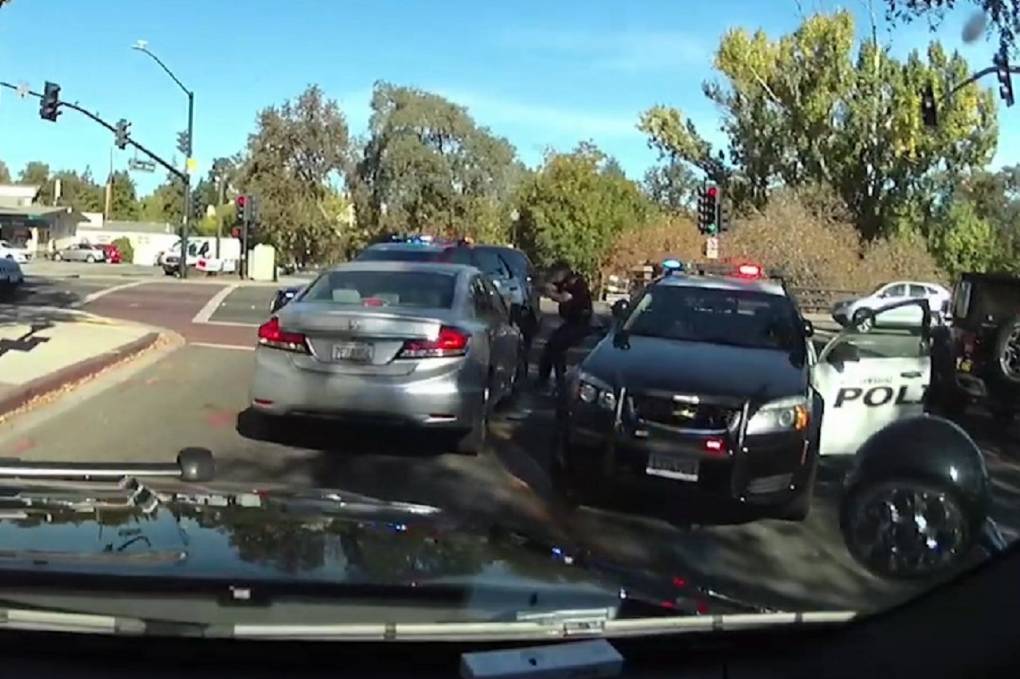The video begins with Hall’s body cam footage, which was activated as he approached the intersection in response to 911 calls about someone throwing rocks off the Sycamore Valley Road overpass onto the I-680 freeway below.
Hall gets out of his vehicle and calls out to Wilson, who is walking into the intersection, saying, “Hey buddy, come here real quick! Come here!”
Wilson refuses and continues walking away from Hall across the intersection, saying, “Who are you?”
Hall says, “You’re jaywalking now … We’re not playing this game dude.”
After continuing to pursue Wilson on foot into the intersection, Hall identifies himself as “Officer Andrew Hall of Danville Police,” to which Wilson responds, “From where? Authority of what?”
Hall closes the distance between them as Wilson stands still for a moment, before Wilson begins walking backward, away from Hall, holding a paper bag in one hand and what appears to be a small knife in the other.
“Don’t fucking touch me,” Wilson says as he begins to walk backward. “Touch me and see what’s up.”
Hall yells, “Drop the knife” as Wilson stops in the street and says, “No … Kill me,” while tapping his chest.
Wilson then takes a couple slow, halting steps forward. Hall yells, “Drop the knife” twice more, and shoots Wilson once. Wilson immediately collapses. Responding emergency personnel work to save his life, repeating, “Stay with us, stay with us,” as they roll him onto his side. Wilson died a week later.
The Contra Costa Sheriff’s Office framed the footage as exonerating Hall.
“Any loss of life is tragic, but the community can now see the truth,” said Contra Costa County Sheriff David Livingston in a statement. “Tyrell Wilson did in fact threaten the lives of passing motorists by throwing objects, possibly rocks, from the overpass down onto Highway 680. He was found with numerous rocks in his jacket pocket. He did pull a knife on Officer Hall. He did threaten Officer Hall. And he did start advancing toward Officer Hall in the middle of a major intersection. Officers are forced to make split second decisions to protect themselves and the public and that’s what happened here.”
Officers are generally trained to see a suspect with a knife in close quarters as a deadly threat. But a newly enacted California use-of-force standard under Assembly Bill 392 says officers should only use deadly force when other options aren’t feasible.
Alternatives to deadly force could include what the bill calls “tactical repositioning” to create time and distance between an officer and a person representing a threat.


